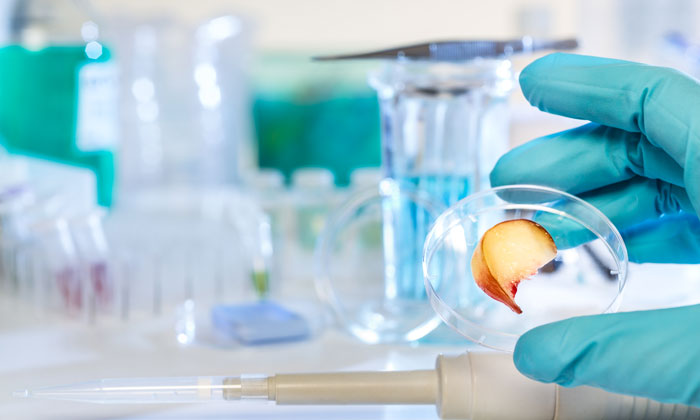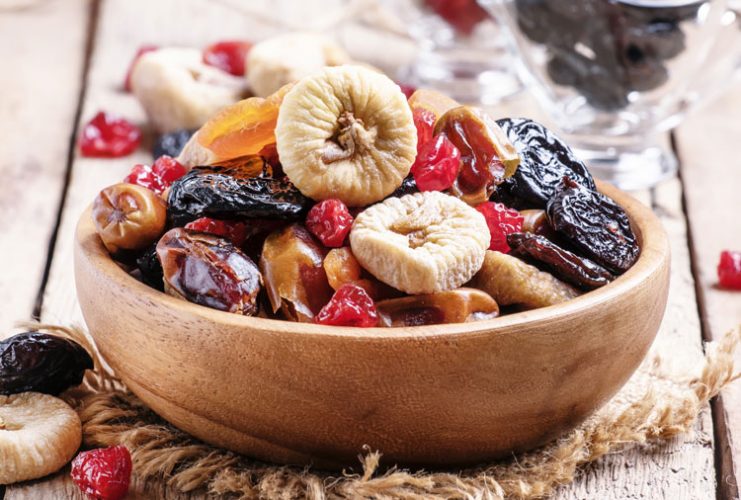Allergens: a look at sulphur dioxide and sulphites
- Like
- Digg
- Del
- Tumblr
- VKontakte
- Buffer
- Love This
- Odnoklassniki
- Meneame
- Blogger
- Amazon
- Yahoo Mail
- Gmail
- AOL
- Newsvine
- HackerNews
- Evernote
- MySpace
- Mail.ru
- Viadeo
- Line
- Comments
- Yummly
- SMS
- Viber
- Telegram
- Subscribe
- Skype
- Facebook Messenger
- Kakao
- LiveJournal
- Yammer
- Edgar
- Fintel
- Mix
- Instapaper
- Copy Link
Posted: 7 December 2017 | Dr Mike Jordan | Vitamins & Food Chemistry Laboratory Manager | Premier Analytical Services | No comments yet
Allergens are defined as any substance – often a protein – that induces an allergy. Reactions to allergens can range from minor discomfort, such as a rash or hives, all the way through to anaphylactic shock and death. Dr Mike Jordan, of Premier Analytical Services, explains.


ALLERGEN: Dried fruits and vegetables routinely report the highest levels of sulphites
Since the tightening of certain allergen levels and labelling listed in Annex II to an EU Regulation about food allergy information provided to consumers (as amended by Commission Delegated Regulation No 78/2014),1 the industry has adopted a new focus: operating accurate testing regimes, minimising the chance of cross contamination in production or with ingredients and ensuring traceability of materials. While some of the allergens have created whole new markets, such as gluten-free, some remain relatively unknown – one such example being that of sulphur dioxide and/or sulphites.
Sulphur dioxides and sulphites (E220 – E228) are chemical compounds that can be naturally occurring (sulphur dioxide is present in wine or beer, for example) and are most commonly used as preservatives in a wide range of foods. They are used to extend the shelf life of products, as well as to kill bacteria, and are popular due to their ability to maintain product colour and have a softening effect – particularly useful in the dried fruit market.
Dried fruits and vegetables routinely report the highest levels of sulphites, due to their preservative abilities, while maintaining colour and texture. This makes them especially popular in lighter coloured fruits and vegetables that risk turning brown.
Another key application area is wine, cider and beer. While these beverages have levels of naturally occurring sulphites, more are added to products to help preserve them and kill bacteria. Sulphites are also routinely found in soft drinks and fruit juices. Other uses include, but are not limited to: condiments, sausages and burger meat, jam, prawns and dried soup mixes.
As with most allergies, the effect of sulphur dioxide and/or sulphites can vary. There are also known effects for sensitive individuals – and these can manifest in a number of delayed reactions including rashes, low blood pressure, diarrhoea and stomach pains.


Asthma sufferers in particular have a higher risk of developing a reaction to sulphur dioxide and/or sulphites. It is thought that between three and 10 per cent of asthmatics experience these reactions. Certain types of asthma – such as steroid-dependant or chronic childhood asthma – are more likely to have severe reactions.
Around 20 deaths are known to have been a result of an allergic reaction to sulphur dioxide and/or sulphites.
Permitted levels and screening
If sulphur dioxide and/or sulphites are present at levels above 10mg/kg or 10mg/Litre in the finished product – prepared according to the manufacturer’s instructions – this must be declared on the label. If these substances are added as a technological function in the finished product – as a preservative, for example – the function and the name and/or e-number of the additive should be included.
At odds with most allergens, there is no protein or DNA that can be extracted from sulphites – meaning that highly sensitive analytical chemistry is the only means to ascertain their presence in food and food products.
Although there are historic techniques for determining sulphites, they have known limitations and accuracy issues with the limits set out in Annex II (as amended by Commission Delegated Regulation No 78/2014).1
Sulphites are found in foods by relatively straightforward procedures. Most commonly, these involve a distillation process in which the sample is dispersed in an acidified solution to convert all sulphite forms to sulphurous acid (a solution of sulphur dioxide) and the free sulphur dioxide is distilled into a trapping solution to be quantified. In the Monier-Williams method – a standard approach used by many laboratories – the sulphur dioxide is flushed from the refluxing acidified solution using a stream of nitrogen gas and the gas is trapped in a solution of hydrogen peroxide. Once in solution, as sulphurous acid, the sulphur dioxide is oxidised by the peroxide to sulphuric acid – ie, the sulphite ion is oxidised to a sulphate ion. The final determination of the sulphuric acid produced is accomplished by titrating with standard sodium hydroxide solution.
This method works very well for most sulphited food types, where sulphites are present at concentrations of tens or hundreds of ppm. It does, however, have its limitations.
Firstly, as originally devised, the method requires setting up of the glassware for each sample to be separately refluxed for 40 minutes to evolve and trap the sulphur dioxide. In the modern routine analytical laboratory this is far too time-consuming an approach. Fortunately, today we have rapid distillation units that generate steam to introduce into the acidified sample suspension, which brings about complete distillation in just six minutes.
The second limitation of the original Monier-Williams method is its sensitivity and robustness at very low concentrations of sulphur dioxide. The limit of detection of this method is approximately 10ppm. This is also, as mentioned above, the limit set in legislation for declaring sulphite allergens in foods. Being confident of the presence or absence of sulphite in a product is obviously of great importance for a food producer and the original Monier-Williams method is far from satisfactory for this purpose.
In the PAS laboratories, an adaption of the Monier-Williams method has greatly improved this determination at levels around and below 10ppm.
The new approach – sensitive and accurate
The PAS method employs firstly a six-minute distillation step, in which sulphur dioxide is collected in a hydrogen peroxide trapping solution. This solution containing sulphuric acid is then tested using ion chromatography with a conductivity detector to separate the sulphate ion chromatographically, before quantification using this highly specific detection method.
This method has several advantages. Firstly, after each distillation is complete, the analyst does not have to spend time titrating the peroxide-trapped sample. They are simply put onto the chromatography system to be run in a queue – usually overnight. Secondly, the instrumental approach, with specific and sensitive conductivity detection, gives a lower detection limit of 2ppm and reduces uncertainty. The errors associated with determining a titration end-point are no longer a factor.
Finally, this approach – by specifically measuring sulphate ions (the product obtained from oxidation of sulphites in the sample) – avoids any uncertainty over whether the conventional titration with sodium hydroxide is measuring solely sulphuric acid or potentially other acid species co-distilled into the trapping solution.
This extra confidence is extremely important for the reliable measurement of low sulphite concentrations around the legal declaration limit.
The future of sulphites
With the UK food market increasingly aware of health issues – as well as the growing popularity of the ‘food-to-go’ market – dried fruits and vegetables (and products derived from these, such as fruit bars) are gaining importance. This means that manufacturers are looking for ways to prolong shelf life and therefore the profitability of their products – something that sulphites with their preservative and anti-bacterial qualities can support.


With new and sensitive techniques, manufacturers are able to effectively monitor sulphites within their products, to ensure that they maximise their product potential while conforming to legislation. The new sensitivity of techniques also ensures that consumers have the confidence that they can safely consume these products.
About the author
With over 35 years’ experience in food analysis and liquid chromatography, Dr Mike Jordan FRSC provides unrivalled expertise, advice and support to both manufacturing sites and NPD teams, as well as a wide base of international customers. At PAS he leads a specialist team of chemists in the analysis of vitamins, food additives and contaminants. Mike began his career in the field of oils and fats at Leatherhead Food International and continues to work on innovative methods for assessing rancidity and shelf-life of foods.
References
Issue
Related topics
Allergens, Food Safety, Free From, Health & Nutrition, Ingredients









